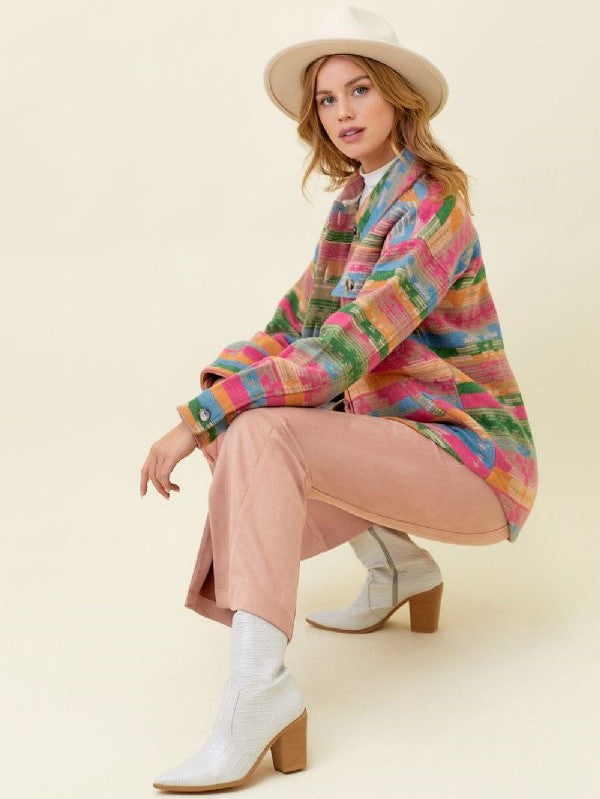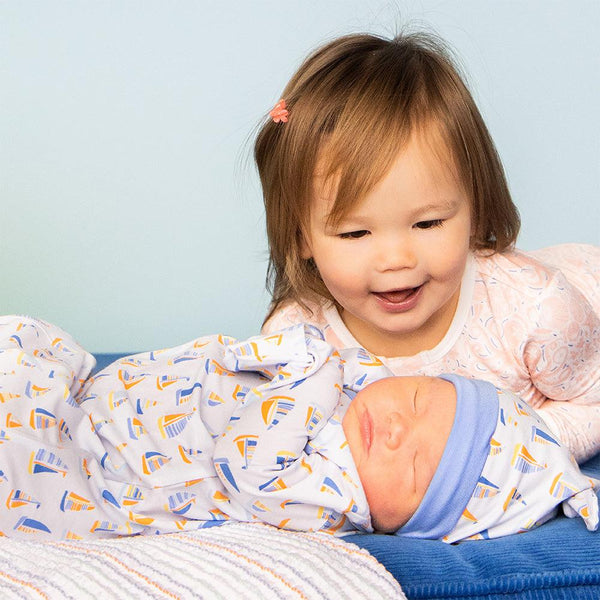Developing a signature style isn't about following trends or copying someone else's aesthetic – it's about understanding yourself deeply enough to express your personality, values, and aspirations through your clothing choices. Your personal fashion identity should feel as natural and authentic as your speaking voice, serving as a visual representation of who you are while supporting your lifestyle and goals. This process requires self-reflection, experimentation, and the confidence to trust your instincts over external pressures.
Understanding Personal Style vs. Fashion Trends
Personal Style represents your consistent aesthetic preferences and the way you choose to present yourself to the world, regardless of what's currently trending. It's the thread that connects all your outfit choices, creating a recognizable signature that feels authentically you.
Fashion Trends are temporary cultural moments that may or may not align with your personal aesthetic. A strong personal style allows you to selectively incorporate trending elements that genuinely appeal to you while ignoring those that don't serve your aesthetic vision.
The Integration Balance involves learning to use trends as inspiration rather than instruction, taking elements that genuinely enhance your personal style while maintaining your authentic aesthetic foundation. The Mixed Print Tie Waist Midi Dress might appeal to someone whose signature style includes bold patterns and feminine silhouettes, regardless of whether mixed prints are currently trending.
Identifying Your Style Personality
Lifestyle Assessment forms the foundation of authentic personal style. Consider your daily activities, professional requirements, social environments, and personal comfort preferences. Someone who spends most days in academic settings will develop a different signature style than someone in creative fields, and both approaches can be equally sophisticated and authentic.
Value Alignment ensures your style choices reflect what matters to you. If sustainability is important, your signature style might emphasize quality pieces like the Deuce Dolman Waffle Knit Top that offer longevity and versatile styling options. If creativity is central to your identity, you might gravitate toward pieces with artistic details or unique construction.
Comfort Zone Definition involves understanding both your physical and psychological comfort levels. Your signature style should feel like a natural extension of yourself rather than a costume you wear to fit in or stand out.
Exploring Style Archetypes
Classic Elegance gravitates toward timeless silhouettes, quality construction, and sophisticated simplicity. This style personality might be drawn to pieces like the Eyelet Button Down Dress W/Front Pockets for its clean lines and versatile sophistication that works across multiple occasions.
Romantic Femininity embraces soft details, flowing fabrics, and delicate embellishments. The Garden Reverie Maxi Dress would appeal to this style personality through its flowing silhouette and romantic aesthetic that celebrates feminine beauty.
Modern Minimalism prefers clean lines, neutral colors, and unfussy silhouettes that create sophisticated impact through simplicity rather than ornamentation. This approach values quality and versatility over decorative details.
Bohemian Creativity combines artistic elements, textural interest, and free-spirited silhouettes that reflect creative thinking and nonconformist values. This style personality often mixes patterns, textures, and cultural influences in personal, expressive ways.
Professional Power balances authority with approachability, choosing pieces that convey competence while maintaining feminine appeal. This style personality requires versatility for multiple professional contexts while expressing personal aesthetics within appropriate boundaries.
Color Psychology in Personal Style
Signature Color Palettes often develop naturally as you gravitate toward colors that make you feel confident and look healthy. Pay attention to which colors consistently receive compliments and make you feel most like yourself.
Seasonal Adaptations of your signature colors allow for variety while maintaining consistency. If navy is part of your signature palette, you might wear deeper navy in fall and winter, lighter navy in spring and summer, maintaining your aesthetic while serving seasonal appropriateness.
Emotional Color Connections recognize that certain colors may hold personal significance or create specific emotional responses. Your signature style should incorporate colors that genuinely make you feel positive and confident rather than colors chosen solely for their supposed flattering properties.
Building Your Signature Silhouettes
Body Harmony involves understanding which silhouettes make you feel most confident and comfortable, then building your wardrobe around these shapes while allowing for variety within your preferred parameters.
Proportion Preferences develop as you understand which proportions feel most authentic to your aesthetic vision. Some people feel most themselves in flowing, relaxed silhouettes, while others prefer more structured, defined shapes like those found in the Balloon Half Sleeve Poplin Midi Dress W/Pockets.
Versatility Requirements ensure your signature silhouettes work across your lifestyle needs. Your preferred shapes should translate well from casual to professional to social contexts, allowing for consistent style expression regardless of the occasion.
Texture and Fabric Preferences
Tactile Comfort plays a crucial role in signature style development. You'll naturally gravitate toward fabrics that feel good against your skin and move with your body in appealing ways. The Heart Knit Puff Sleeve Top W/Stripe Trim might appeal to someone whose signature style includes comfortable, textural knits.
Visual Texture Appeal involves understanding whether you prefer smooth, flowing fabrics or more structured, textural materials. These preferences often correlate with your overall aesthetic vision and lifestyle needs.
Seasonal Fabric Adaptation allows your signature style to work year-round through appropriate fabric choices while maintaining your essential aesthetic elements.
Detail Preferences and Signatures
Signature Details are specific elements that consistently appear in your wardrobe choices – perhaps you always choose pieces with interesting necklines, unique sleeve treatments, or specific types of embellishment. The Embroidered Ruffle Tie Back Dress might appeal to someone whose signature includes romantic details and textural interest.
Quality Markers that consistently appeal to you help define your style standards and ensure your wardrobe feels cohesive in terms of craftsmanship and attention to detail.
Functional Details ensure your signature style serves your practical needs while maintaining aesthetic appeal. Pockets, adjustable elements, and comfortable construction details can become part of your signature while serving lifestyle requirements.
Professional Style Integration
Career Field Considerations influence how your personal style manifests in professional settings. Creative fields often allow more personal expression, while conservative professions require more subtle style signatures that still feel authentic.
Authority with Authenticity describes the balance required in professional personal style – your clothing should convey competence while feeling true to your aesthetic vision and personality.
Growth Accommodation ensures your signature style can evolve with career advancement and changing professional needs while maintaining its essential character and authenticity.
Social Context Adaptations
Occasion Flexibility allows your signature style to translate appropriately across different social contexts without losing its essential character. Your style should feel recognizably yours whether you're dressed for class, work, or social events.
Cultural Sensitivity ensures your personal style expression respects different social environments while maintaining authenticity. This balance requires understanding when to emphasize different aspects of your signature style.
Confidence Across Contexts means your signature style should make you feel appropriately dressed and confident regardless of the social situation, supporting rather than undermining your comfort and self-assurance.
Wardrobe Curation Strategies
Quality over Quantity principles guide signature style development by emphasizing pieces that truly serve your aesthetic vision and lifestyle needs rather than filling closets with items that don't reflect your authentic preferences.
Versatility Maximization ensures each piece in your signature wardrobe works with multiple other pieces, creating numerous outfit combinations that all feel authentically you.
Investment Piece Identification helps you recognize which items deserve higher budget allocation because they perfectly embody your signature style and will provide long-term satisfaction and versatility.
Evolution and Refinement
Natural Growth allows your signature style to evolve gradually as you mature, change lifestyles, or discover new aspects of your aesthetic preferences. This evolution should feel organic rather than forced.
Experimentation Within Boundaries maintains your style signature while allowing for creative exploration and growth. You might try new colors within your preferred palette or experiment with different silhouettes within your comfort zone.
Authenticity Checks help ensure style evolution stays true to your essential aesthetic vision rather than being driven by external pressures or temporary influences.
Common Style Development Challenges
Comparison Trap involves measuring your style against others' rather than developing authentic personal preferences. Remember that signature style is deeply personal and should serve your unique needs and preferences.
Trend Pressure can derail authentic style development by encouraging choices based on external validation rather than personal aesthetic vision. Use trends as inspiration rather than instruction.
Perfectionism Paralysis prevents style experimentation and natural development. Allow yourself to make mistakes and learn from them rather than demanding immediate style perfection.
Practical Implementation Steps
Style Documentation through photos or style journals helps you identify patterns in your preferences and successful outfit combinations that feel authentically you.
Gradual Wardrobe Shifts allow you to implement your signature style discoveries slowly and thoughtfully rather than making dramatic changes that might not serve your long-term style goals.
Feedback Integration from trusted sources can provide valuable outside perspective while maintaining your final authority over style decisions that feel right for your authentic self-expression.
Long-term Style Satisfaction
Authenticity Rewards ensure that developing genuine personal style leads to increased confidence, reduced decision fatigue, and greater satisfaction with your wardrobe investments.
Lifestyle Alignment creates harmony between your style choices and daily life requirements, making getting dressed a pleasure rather than a source of stress or conflict.
Personal Expression through signature style should feel fulfilling and authentic, allowing you to communicate your personality and values through your appearance while feeling comfortable and confident.
Developing your signature style is a journey of self-discovery that requires patience, experimentation, and the courage to trust your instincts. Whether you're drawn to the romantic details of the Floral Jacquard Contrast Sheer Sleeves Dress or the clean sophistication of minimalist silhouettes, your authentic style preferences will guide you toward choices that feel right for your unique combination of lifestyle, personality, and aesthetic vision.
Remember that signature style isn't about finding one look and never changing – it's about understanding yourself well enough to make clothing choices that consistently reflect your authentic self while allowing for growth, evolution, and creative expression. The goal is creating a wardrobe that serves your life beautifully while making you feel confident and genuinely yourself every time you get dressed.





